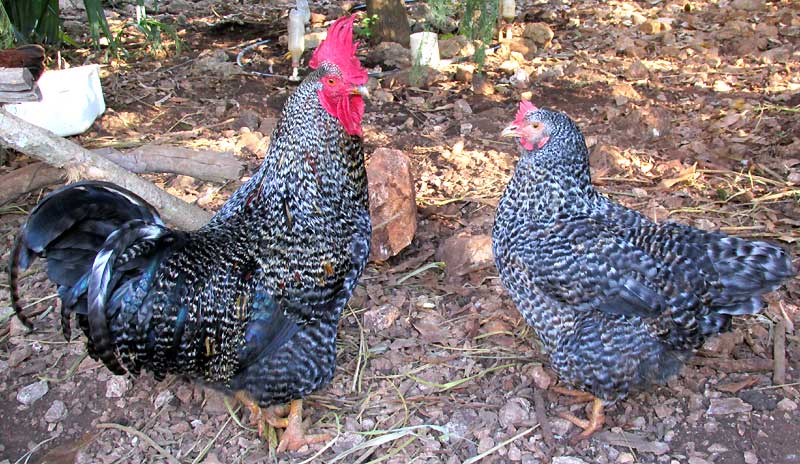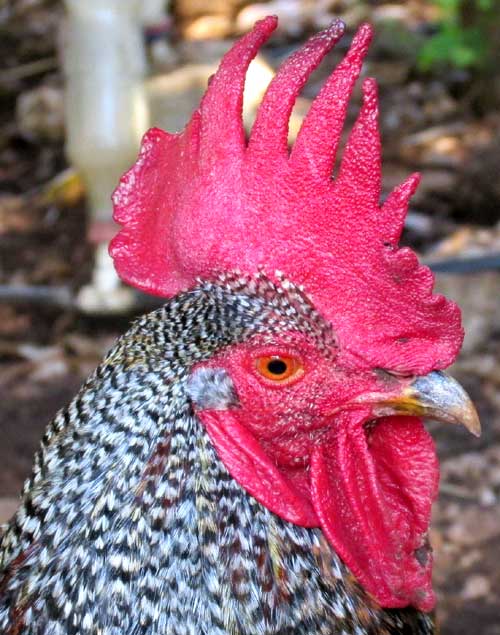Excerpts from Jim Conrad's
Naturalist Newsletter
from the December 11, 2016 Newsletter issued from Rancho Regenesis in the woods ±4kms west of Ek Balam Ruins; elevation ~40m (~130 ft), N20.876°, W88.170°; north-central Yucatán, MÉXICO
PLYMOUTH ROCKS AT THE RANCHO
At the rancho we're getting plenty of oranges these days, despite the woodpeckers having destroyed most of the fruits before they could ripen. I eat my share, about once a week entering the spacious chicken pen where numerous orange, lime, lemon and grapefruit trees provide the shade, and pick all I want. While I'm there, the chickens gather around watching me sideways, and in fact sometimes I do knock over a rock with bugs beneath it, or accidentally shake a katydid from a tree, which to a hen is a banquet.
It's easy to forget just how handsome well fed, free-roaming chickens can be. There's a dignity about them that -- if you pay attention and keep your mind open -- transcends our human-focused stereotypes. Below, just look at the pretty and self-possessed couple:

The rooster is at his prime, with a large, bright-red comb, loosely drooping wattles, and shiny ear-lobes, which can be admired in the close-up below:

The hen is too young for her red parts to be fully developed, but still she displays a composure worthy of an old hen who has seen it all. Her portrait is below:

There's a world of chicken races and it can be hard to distinguish between similar ones, but this seems to be the Plymouth Rock, a breed developed in the US and first seen in Massachusetts during the 1800s. During much of the early 20th century it was the most popular chicken breed in the US, being considered a "dual-purpose breed," raised both for its meat and brown eggs. Plymouth Rocks are easy to manage, good sitters, and resistant to the cold. Nowadays Plymouth Rocks are less seen than before because of industrial chicken farming, which has different requirements for its unfortunate, mass-produced, caged ones.
Several breeds show the black-and-white mottling, but Plymouth Rocks are distinguished by their single combs with five points, the white feathers being truly white and not gray or dingy, and by feathers of the same color aligning so that they form distinct rows or bars, instead of being sprinkled about haphazardly. In the US, seven Plymouth Rock color varieties are recognized